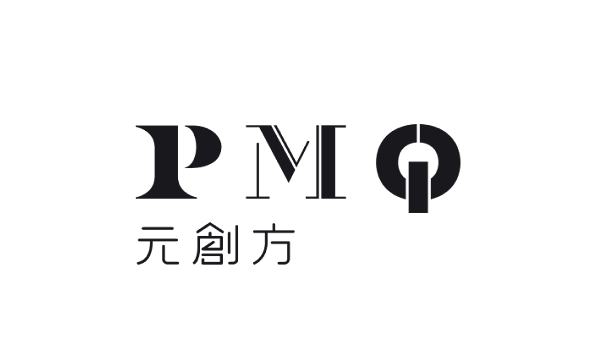Why do humans possess the capacity to imagine something better than the present? This may feel instinctive, yet it is profoundly different from anything in the natural world. Animals, though capable of building nests or dens, are bound by genetics and environment in their making. Their survival depends on a certain capacity for anticipation, yet whether they possess imagination remains uncertain. What we do know is that they lack the freedom and ability to innovate. Humans, by contrast, draw blueprints for what has not yet existed and strive to bring it into reality. Yet once we achieve what we once desired, we begin again—launching ourselves into the next pursuit. This cycle expands endlessly, as if within us lies a Promised Land or Utopia we can never quite reach.
This unceasing desire is the source of our creativity, but also the root of our restlessness. When viewed through this lens, design is no longer merely the construction of function: it becomes a reflection of thought, desire, and yearning. However, yearning is not inherently benevolent. Deep-seated desires can also give rise to ego-centric, dishonest, or even malicious design motivations. In such cases, design risks becoming a vessel for narrow interests rather than a medium of collective meaning. After all, not all dreams lead to harmony; design can serve as a bridge—but just as easily, it can create division.
Building on these observations, we may begin to understand design through "Design Trichotomy"—a framework of three interrelated interpretive layers:
Layer 1 — Practical, Aesthetic, and Material
Layer 2 — Structural, Social, and Cultural
Layer 3 — Emotional, Existential, and Aspirational
When examined through these three dimensions, even the most mundane or unassuming object may yield new interpretations and critical insights. To foreground these layered meanings within each participating work, deTour 2025 introduces three guiding questions posed to participating designers to help audiences understand the thinking process and value system behind each design.
When we encounter a work through the lens of the designer’s memories, ideas, and visions, it ceases to be a purely functional or aesthetic object. Instead, it becomes a vessel—a container for thought, desire, and hope — one that delineates The Shape of Yearning.
Adonian Chan
Curator of deTour 2025 – design festival
AboutHome
Curatorial Statement
The Shape of Yearning
About deTour 2025
Organised by PMQ with generous support from Hong Kong’s Cultural and Creative Industries Development Agency, deTour 2025 – design festival opens its doors from 28 November to 7 December.
Curated by designer and design curator, Adonian Chan, deTour 2025 unfolds under the banner of “The Shape of Yearning” (想望之器). This edition invites us to explore this journey across the “Design Trichotomy”: Envisioning, the questions we seek to resolve; Idealising, the futures we hope to shape; and Believing, the convictions that compel us to create.
Featuring 17 installations and exhibits, this year’s festival brings together designers from Hong Kong, Chinese Mainland, Italy, Japan, the Philippines, Switzerland, and the United States. International Collaboration is designed by Encor Studio from Switzerland. Through delicate use of light and electrochromic films, as well as sound and visual composition, the Studio turned the Qube within PMQ into a living, responsive canvas. This minimalist installation offers unforgettable immersive sensory experience and invites the audience to explore the integration of technology and design, while reawakening memory and evoking traces of time.
The curator also highlights four Feature Exhibitions to interpret this year's theme. “Home Ecology – The Philo Modular System”, by Hong Kong creative duo TOUN 亠, reimagines urban flexibility. Aluminium components can be freely assembled into varied forms, transforming homes into dynamic, ever-evolving spaces that inspire adaptable and sustainable living.
“Instrument.Play.Graphics - Modular Graphic Synthesizer -”, by award-winning Japanese designer Shunta Sakamoto, builds upon and elevate his signature series, translating audience interaction into visual imagery, merging sight and sound to rediscover the joy of “playing with design”.
Italian designer Lucia Massari takes inspiration from the Renaissance master Giuseppe Arcimboldo’s paintings of the same name in her "primavera" lamp series. By continuing the Venetian glassmaking tradition while infusing it with bold, contemporary colours, breathing new life into a centuries-old craft.
Studio Nopqrst, a London-based Hong Kong creative studio presents “Trueform”, which transforms the traces left by torn street posters into handcrafted images, sculptures, AR models and AI generated videos. By revealing the beauty within fragments, the work reflects on design’s intrinsic value beyond form and function—and on humanity’s irreplaceable role in the age of artificial intelligence.
In addition, 12 outstanding works were selected through an open call. They showcase the diversity and creative vitality of this year’s participants, drawing inspiration from AI generation, architecture and cityscape, sound design, innovative materials, and even MBTI personality theory. The festival will also feature over 40 workshops, 12 Creative Voice dialogues, performances and book clubs, 80 guided tours, and the family-friendly programme “deTour Kids”. Join us at PMQ to immerse yourself in Hong Kong’s annual celebration of design—and to explore its boundless possibilities.
Organiser
Located in the heart of Hong Kong’s SoHo district, PMQ is the landmark of creative and design industries housing over 100 Hong Kong emerging designers. In 2014, PMQ was revitalised and transformed into a creative hub with a variety of design studios showcasing a wide array of design products including fashion and accessories, gifts & premium, homeware, and small furniture as well as other lifestyle goods and creative products. PMQ has now become an interactive platform for supporting up-and-coming creative talent and fostering a community of patrons and lovers of creativity, design, and heritage. It is also one of the popular venues in town for international design, arts, and cultural events from Hong Kong and around the world.
The Cultural and Creative Industries Development Agency (CCIDA) established in June 2024, formerly known as Create Hong Kong (CreateHK), is a dedicated office set up by the Government of the Hong Kong Special Administrative Region (HKSAR Government) under the Culture, Sports and Tourism Bureau to provide one-stop services and support to the cultural and creative industries with a mission to foster a conducive environment in Hong Kong to facilitate the development of arts, culture and creative sectors as industries. Its strategic foci are nurturing talent and facilitating start-ups, exploring markets, promoting cross-sectoral and cross-genre collaboration, promoting the development of arts, culture and creative sectors as industries under the industry-oriented principle, and promoting Hong Kong as Asia’s creative capital and fostering a creative atmosphere in the community to implement Hong Kong’s positioning as the East-meets-West centre for international cultural exchange under the National 14th Five-Year Plan.
Business of Design Week (BODW), asia’s premier annual event on design, innovation and brands since 2002, is organised by Hong Kong Design Centre and gathers some of the world’s foremost design masters, brand leaders and entrepreneurs from Hong Kong as well as overseas, driving discourse on the value of design and innovation to inspire global audiences and explore new business opportunities.
Hong Kong Design Centre is a strategic partner of the HKSAR Government, harnessing the city's distinctive East-meets-West position to create value through design. To achieve our goals we: • Cultivate a culture of design • Bridge stakeholders to opportunities that unleash the power of design • Promote excellence in various design disciplines




